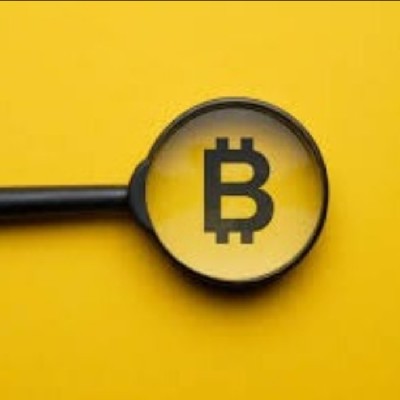Bitget:全球日交易量排名前 4!
BTC 市占率63.34%
Bitget 新幣上架 : Pi Network
BTC/USDT$94827.19 (+1.75%)恐懼與貪婪指數65(貪婪)
山寨季指數:0(比特幣季)
盤前交易幣種INIT比特幣現貨 ETF 總淨流量:+$139.9M(1 天);+$2.9B(7 天)。Bitget 新用戶立享 6,200 USDT 歡迎禮包!立即領取
到 Bitget App 隨時隨地輕鬆交易!立即下載
Bitget:全球日交易量排名前 4!
BTC 市占率63.34%
Bitget 新幣上架 : Pi Network
BTC/USDT$94827.19 (+1.75%)恐懼與貪婪指數65(貪婪)
山寨季指數:0(比特幣季)
盤前交易幣種INIT比特幣現貨 ETF 總淨流量:+$139.9M(1 天);+$2.9B(7 天)。Bitget 新用戶立享 6,200 USDT 歡迎禮包!立即領取
到 Bitget App 隨時隨地輕鬆交易!立即下載
Bitget:全球日交易量排名前 4!
BTC 市占率63.34%
Bitget 新幣上架 : Pi Network
BTC/USDT$94827.19 (+1.75%)恐懼與貪婪指數65(貪婪)
山寨季指數:0(比特幣季)
盤前交易幣種INIT比特幣現貨 ETF 總淨流量:+$139.9M(1 天);+$2.9B(7 天)。Bitget 新用戶立享 6,200 USDT 歡迎禮包!立即領取
到 Bitget App 隨時隨地輕鬆交易!立即下載



Fuel Network 價格FUEL
上架
報價幣種:
TWD
NT$0.4069+5.22%1D
價格圖表
TradingView
市值
Fuel Network價格走勢圖 (FUEL/TWD)
最近更新時間 2025-04-26 03:26:22(UTC+0)
市值:NT$1,889,382,502.24
完全稀釋市值:NT$1,889,382,502.24
24 小時交易額:NT$110,923,851.92
24 小時交易額/市值:5.87%
24 小時最高價:NT$0.4126
24 小時最低價:NT$0.3849
歷史最高價:NT$2.75
歷史最低價:NT$0.2350
流通量:4,643,048,400 FUEL
總發行量:
10,052,137,374.42FUEL
流通率:46.00%
最大發行量:
--FUEL
以 BTC 計價:0.{6}1317 BTC
以 ETH 計價:0.{5}6921 ETH
以 BTC 市值計價:
NT$13,213.11
以 ETH 市值計價:
NT$1,528.68
合約:
0x675B...192079c(Ethereum)
更多
您今天對 Fuel Network 感覺如何?
注意:此資訊僅供參考。
Fuel Network 的 AI 分析報告
今日加密市場熱點查看報告
今日Fuel Network即時價格TWD
今日 Fuel Network 即時價格為 NT$0.4069 TWD,目前市值為 NT$1.89B。過去 24 小時內,Fuel Network 價格漲幅為 5.22%,24 小時交易量為 NT$110.92M。FUEL/TWD(Fuel Network 兌換 TWD)兌換率即時更新。
Fuel Network價格歷史(TWD)
過去一年,Fuel Network價格上漲了 -76.52%。在此期間,FUEL兌TWD 的最高價格為 NT$2.75,FUEL兌TWD 的最低價格為 NT$0.2350。
時間漲跌幅(%) 最低價
最低價 最高價
最高價 
 最低價
最低價 最高價
最高價 
24h+5.22%NT$0.3849NT$0.4126
7d+39.67%NT$0.2810NT$0.4126
30d+4.60%NT$0.2350NT$0.5849
90d-62.20%NT$0.2350NT$1.11
1y-76.52%NT$0.2350NT$2.75
全部時間-37.52%NT$0.2350(2025-04-07, 19 天前 )NT$2.75(2024-12-29, 118 天前 )
Fuel Network的最高價格是多少?
Fuel Network兌換TWD的歷史最高價(ATH)為 NT$2.75,發生於 2024-12-29。相較於價格回撤了 85.21%。
Fuel Network的最低價格是多少?
Fuel Network兌換TWD的歷史最低價(ATL)為 NT$0.2350,發生於 2025-04-07。相較於Fuel Network歷史最低價,目前Fuel Network價格上漲了 73.13%。
Fuel Network價格預測
FUEL 在 2026 的價格是多少?
根據FUEL的歷史價格表現預測模型,預計FUEL的價格將在 2026 達到 NT$0.6068。
FUEL 在 2031 的價格是多少?
2031,FUEL的價格預計將上漲 +48.00%。 到 2031 底,預計FUEL的價格將達到 NT$1.12,累計投資報酬率為 +187.73%。
常見問題
Fuel Network 的目前價格是多少?
Fuel Network 的即時價格為 NT$0.41(FUEL/TWD),目前市值為 NT$1,889,382,502.24 TWD。由於加密貨幣市場全天候不間斷交易,Fuel Network 的價格經常波動。您可以在 Bitget 上查看 Fuel Network 的市場價格及其歷史數據。
Fuel Network 的 24 小時交易量是多少?
在最近 24 小時內,Fuel Network 的交易量為 NT$110.92M。
Fuel Network 的歷史最高價是多少?
Fuel Network 的歷史最高價是 NT$2.75。這個歷史最高價是 Fuel Network 自推出以來的最高價。
我可以在 Bitget 上購買 Fuel Network 嗎?
可以,Fuel Network 目前在 Bitget 的中心化交易平台上可用。如需更詳細的說明,請查看我們很有幫助的 如何購買 fuel-network 指南。
我可以透過投資 Fuel Network 獲得穩定的收入嗎?
當然,Bitget 推出了一個 機器人交易平台,其提供智能交易機器人,可以自動執行您的交易,幫您賺取收益。
我在哪裡能以最低的費用購買 Fuel Network?
Bitget提供行業領先的交易費用和市場深度,以確保交易者能够從投資中獲利。 您可通過 Bitget 交易所交易。
Fuel Network 資訊
查看更多
Fuel Network行情
Fuel Network持幣
Fuel Network持幣分布矩陣
Fuel Network持幣分布集中度
巨鯨
投資者
散戶
Fuel Network地址持有時長分布
長期持幣者
游資
交易者
coinInfo.name(12)即時價格表

全球Fuel Network價格
目前Fuel Network用其他貨幣計價是多少?最近更新時間:2025-04-26 03:26:22(UTC+0)
FUEL 兌換 MXN
Mexican Peso
Mex$0.24FUEL 兌換 GTQGuatemalan Quetzal
Q0.1FUEL 兌換 CLPChilean Peso
CLP$11.68FUEL 兌換 HNLHonduran Lempira
L0.32FUEL 兌換 UGXUgandan Shilling
Sh45.8FUEL 兌換 ZARSouth African Rand
R0.23FUEL 兌換 TNDTunisian Dinar
د.ت0.04FUEL 兌換 IQDIraqi Dinar
ع.د16.37FUEL 兌換 TWDNew Taiwan Dollar
NT$0.41FUEL 兌換 RSDSerbian Dinar
дин.1.29FUEL 兌換 DOPDominican Peso
RD$0.74FUEL 兌換 MYRMalaysian Ringgit
RM0.05FUEL 兌換 GELGeorgian Lari
₾0.03FUEL 兌換 UYUUruguayan Peso
$0.52FUEL 兌換 MADMoroccan Dirham
د.م.0.12FUEL 兌換 OMROmani Rial
ر.ع.0FUEL 兌換 AZNAzerbaijani Manat
₼0.02FUEL 兌換 KESKenyan Shilling
Sh1.61FUEL 兌換 SEKSwedish Krona
kr0.12FUEL 兌換 UAHUkrainian Hryvnia
₴0.52- 1
- 2
- 3
- 4
- 5
如何購買Fuel Network(FUEL)

建立您的免費 Bitget 帳戶
使用您的電子郵件地址/手機號碼在 Bitget 註冊,並建立強大的密碼以確保您的帳戶安全

認證您的帳戶
輸入您的個人資訊並上傳有效的身份照片進行身份認證

將 Fuel Network 兌換為 FUEL
在 Bitget 上選擇加密貨幣進行交易。
了解更多交易 FUEL 永續合約
在 Bitget 上註冊並購買 USDT 或 FUEL 後,您可以開始交易衍生品,包括 FUEL 合約和槓桿交易,增加收益。
FUEL 的目前價格為 NT$0.4069,24 小時價格變化為 +5.22%。交易者可透過做多或做空 FUEL 合約獲利。
購買其他幣種
您可以在哪裡購買Fuel Network(FUEL)?
影片部分 - 快速認證、快速交易

如何在 Bitget 完成身分認證以防範詐騙
1. 登入您的 Bitget 帳戶。
2. 如果您是 Bitget 的新用戶,請觀看我們的教學,以了解如何建立帳戶。
3. 將滑鼠移到您的個人頭像上,點擊「未認證」,然後點擊「認證」。
4. 選擇您簽發的國家或地區和證件類型,然後根據指示進行操作。
5. 根據您的偏好,選擇「手機認證」或「電腦認證」。
6. 填寫您的詳細資訊,提交身分證影本,並拍攝一張自拍照。
7. 提交申請後,身分認證就完成了!
加密貨幣投資(包括透過 Bitget 線上購買 Fuel Network)具有市場風險。Bitget 為您提供購買 Fuel Network 的簡便方式,並且盡最大努力讓用戶充分了解我們在交易所提供的每種加密貨幣。但是,我們不對您購買 Fuel Network 可能產生的結果負責。此頁面和其包含的任何資訊均不代表對任何特定加密貨幣的背書認可,任何價格數據均採集自公開互聯網,不被視為來自Bitget的買賣要約。
Fuel Network評級
社群的平均評分
4.3
此內容僅供參考。
Bitget 觀點

muphy
7小時前
$EPT Coin’s Market Outlook: Bullish or Bearish Trend Ahead?
With $EPT coin gaining traction among crypto traders and investors, the question on everyone’s mind is: What’s next? Will $EPT continue its upward momentum or is a bearish correction on the horizon? This article provides a comprehensive analysis of $EPT’s market outlook, focusing on sentiment, trends, and key catalysts shaping its future direction.
Current Market Sentiment
As of now, market sentiment around $EPT is a mix of cautious optimism and speculative enthusiasm. Trading volumes have seen a noticeable uptick, signaling increasing interest. However, social media chatter and community forums reflect a divided stance—some expect a breakout, while others are preparing for a pullback.
A quick glance at fear and greed indexes and sentiment trackers shows $EPT hovering in a neutral-to-greedy zone, which typically signals heightened trader anticipation but also potential volatility ahead.
Evaluating Market Trends
1. Price Action Overview
Over recent weeks, $EPT has demonstrated both strength and resilience, forming a consistent pattern of higher lows while testing key resistance zones. If this pattern holds, it indicates bullish undercurrents. However, failure to break resistance may turn the trend sideways or bearish in the short term.
2. Volume and Liquidity
Volume spikes on upward moves suggest that bulls are still in control. Liquidity remains healthy, with active participation from traders and a steady flow of new buyers entering the market. If volume begins to dry up, it could be an early sign of momentum fading.
3. On-Chain and Exchange Data
Exchange inflows for $EPT are currently low, indicating that holders are not rushing to sell. Whale wallet activity has shown a modest increase in accumulation, hinting at long-term confidence from larger investors.
Key Catalysts That Could Drive $EPT's Next Move
Bullish Catalysts:
Partnership Announcements: New collaborations or integrations could act as a strong price catalyst.
Exchange Listings: A listing on a major exchange could significantly boost visibility and liquidity.
Roadmap Milestones: If $EPT delivers on promised developments, it could fuel investor optimism.
Bearish Catalysts:
Regulatory Pressure: Any unfavorable regulatory news could trigger panic selling, especially in volatile altcoin markets.
Failure to Maintain Key Support: A drop below major support levels could trigger stop-losses and push prices lower.
Market-wide Corrections: A broader crypto market downturn could negatively affect $EPT regardless of its individual strength.
Bullish or Bearish: What’s the Verdict?
Short-Term Outlook:
Cautiously bullish. As long as $EPT maintains its support levels and sees steady volume, short-term upside is likely. Traders should watch for a clean break above resistance zones for confirmation.
Mid to Long-Term Outlook:
Potentially bullish, but conditional. $EPT’s growth will depend heavily on its ability to meet ecosystem milestones, attract adoption, and maintain community engagement. Without fundamental progress, any price rally may not be sustainable.
Conclusion
The market outlook for $EPT coin remains cautiously optimistic. With growing interest, healthy trading activity, and potential bullish catalysts on the horizon, $EPT may have room to climb. However, traders and investors should stay vigilant, monitor the broader crypto landscape, and be ready to adapt to new developments. In this volatile environment, staying informed is just as important as staying invested.$EPT
FUEL+0.16%
MOVE+3.32%

BitEagle_News
7小時前
Recent days made me realize how happy I am and how important it is I never scaled my lifestyle to my net worth.
I've been in crypto a long time so naturally I've met quite a bunch of people that made good money along the years.
It's tempting to spend more when you make more and that's exactly what they did.
But most fail to realize that crypto or any investing market in general isn't a lineair process.
You can be making much for multiple months but also make close to nothing right after.
Even worse, incur losses as well sometimes. That's why you don't scale your lifestyle to the same extent your net worth rises sometimes.
Take $100k for example. When you make that in the span of 6 months you feel on top of the world. You start calculating and realize that's thee equivalent of close to $17k a month.
Whatever your end goal is, that's already a huge bonus on your life to start with.
Yet a fancy car and some increased spending for a couple of months can quickly erased that.
But you make close to $17k a month right? You can easily keep this up.
Yet you don't... Moments of "less optimal conditions" approach and you'll soon realize you are scrambling not to sell the remaining of your other crypto assets all of a sudden...
Even working at a 9-5 factory job is more than you did before all of a sudden as well.
Same example when you theoretically made more than a million.
If you played it smart you could have even retired for life and kept the ball rolling without ever needing to go work a regular job ever again.
(passive income, yield, real estate etc)
But because you scaled your lifestyle you'll quickly realize everything is gone after 5-10 years.
That Mustang, that Porsche, that lambo, that .... All have HUGE maintenance costs and the fuel it consumes is out of this world.
Those designer clothes and watches are cool and all but no other person even cares and when your money runs out you realize you would have rather sat at home or on the beach in total freedom with a stupid plastic ugly watch than own a Rolex at home you aren't even going to wear because you're stuffing boxes again at the factory or bringing coffee to your boss.
You would think all of this is common sense right?
Yet you would be surprised actually how VERY LITTLE amount of people in this space actually have been able to make more but did not scale their lifestyle to the same extent.
Always remind yourself that you are solely responsible for making sure you have something that lasts or see it come to an end.
FUEL+0.16%
SOON+0.98%
samuelsammy
8小時前
What’s Fueling Bullish Sentiment on Initia Right Now?
What’s Fueling the Bullish Sentiment on Initia Right Now?
The cryptocurrency market is no stranger to rapid shifts in sentiment, but few projects have caught as much bullish attention in recent days as Initia (INIT). From its successful mainnet launch to compelling technical signals, Initia has been building a strong case for continued investor enthusiasm. Here’s a breakdown of what’s driving the current wave of optimism.
Mainnet Launch Sets the Tone
At the center of Initia’s bullish momentum is the much-anticipated launch of its mainnet. This marks a significant milestone for the project, solidifying its transition from concept to a functional layer 1 and layer 2 modular network. The market quickly responded to this development, with INIT posting a 12% price surge within 24 hours of the announcement. More importantly, it managed to break above the 50-day Exponential Moving Average (EMA), a key technical threshold that often signals a shift in long-term trend.
Technical Indicators Flash Green
Beyond the fundamentals, Initia’s price action is also supported by a series of bullish technical signals. On the 4-hour chart, the token is forming an ascending triangle—a continuation pattern that frequently results in a breakout. The Relative Strength Index (RSI) is holding around 60, indicating strong momentum without entering overbought territory. Meanwhile, a bullish crossover in the MACD indicator reinforces the narrative of sustained upward pressure. If INIT can decisively break through the $0.87 resistance, analysts suggest it could target levels near $0.95 or higher in the near term.
Scarcity and Tokenomics Add Fuel
Another factor adding to Initia’s appeal is its tokenomics. INIT features a capped supply structure that introduces scarcity—an important element for long-term price appreciation. Analysts have highlighted the token’s deflationary characteristics, including the possibility of burns and strategic lockups, as reasons why INIT could see a major price expansion over time. Some price models even forecast a long-term valuation around $30 by 2025 if ecosystem adoption and market momentum continue on their current trajectory.
A Word of Caution Amid the Hype
Despite the positive signals, traders should remain alert to potential volatility. Initia’s 24-hour trading volume recently spiked to over 673 million INIT, but its struggle to maintain levels above $0.85 hints at possible near-term exhaustion. Some technical indicators, including the Parabolic SAR flipping above the price and early signs of bearish divergence in MACD and RSI, suggest that a short-term pullback could occur before any sustained move higher.
Conclusion
Initia is currently riding a strong wave of bullish sentiment, driven by a blend of significant technical breakthroughs, favorable chart patterns, and solid tokenomics. While the project’s fundamentals continue to strengthen, investors should maintain a balanced view, combining enthusiasm with caution as the market processes this latest momentum. Whether INIT can convert this surge into a lasting upward trend remains to be seen—but for now, it’s clearly one of the tokens to watch.
$INIT
FUEL+0.16%
MOVE+3.32%

Gblaxx73rc
9小時前
$BTC to $110K is not just hype — here’s why it’s looking more and more realistics...
1. ETF Demand Heating Up
Institutional accumulation is accelerating. BlackRock, Fidelity, and others are scooping BTC like it’s going out of style. These aren’t traders — they’re holding long-term.
2. Supply Shock Incoming
Post-halving effects + long-term HODLers not selling = major supply crunch. Meanwhile, demand’s climbing. That’s classic rocket fuel.
3. On-Chain Strength
Dormant BTC wallets are staying inactive, whale wallets are increasing, and retail is still asleep — the perfect storm for a parabolic move.
4. Historical Patterns Aligning
Every past halving cycle brought a 3x–6x move from pre-halving levels. We’re still early in this one.
5. Global Macro Setup
Rate cuts are coming, fiat is weakening, and digital gold is shining. BTC is becoming the safe haven of the digital age.
---
Target Range:
Short-term: $74K – $84K
Mid-term: $90K – $100K
Cycle Top Potential: $110K – $120K
BTC+0.19%
X+2.60%

Abdulmaliknasiru
10小時前
TITLE
's 2025 Momentum: Institutional Adoption and Legal Clarity Fuel Growth
POST BODY
In 2025, XRP is gaining significant traction due to key developments:
CME Group's XRP Futures Launch: Set for May 19, 2025, CME's introduction of cash-settled XRP futures marks a pivotal move, expanding institutional access to $XRP trading.
(Source: Reuters)
SEC Lawsuit Settlement: Ripple Labs has resolved its longstanding lawsuit with the SEC, providing much-needed regulatory clarity and boosting investor confidence in $XRP .
(Source: Reuters)
Price Performance: $XRP has demonstrated resilience, outperforming major cryptocurrencies with a 5.3% increase year-to-date, while Bitcoin and Ethereum have faced declines.
(Source: Reuters)
Why This Matters:
These developments position $XRP as a strong contender in the crypto market, attracting both retail and institutional investors seeking stability and regulatory assurance.
What are your thoughts on XRP's trajectory in 2025? Share your insights below!$XRP
FUEL+0.16%
MOVE+3.32%
相關資產
相近市值
在所有 Bitget 資產中,這8種資產的市值最接近 Fuel Network。
關於Fuel Network的更多資訊
交易
理財

































